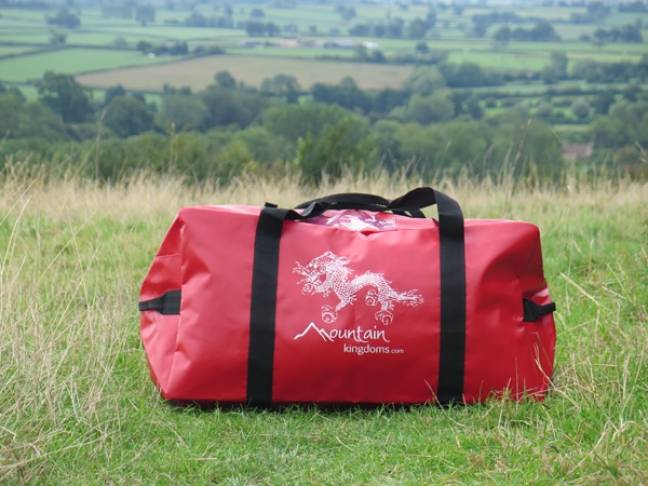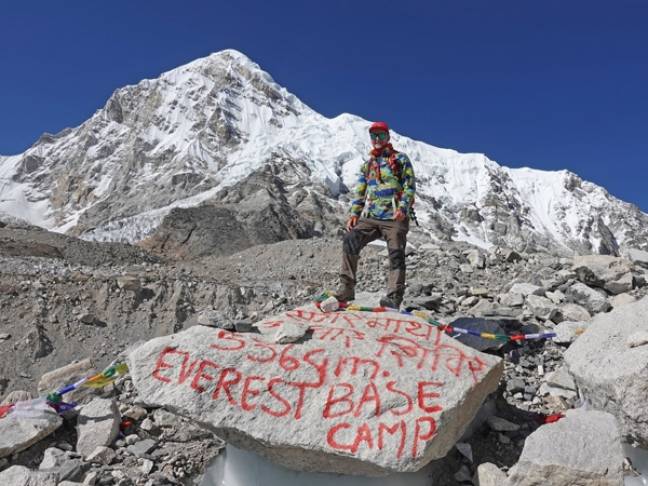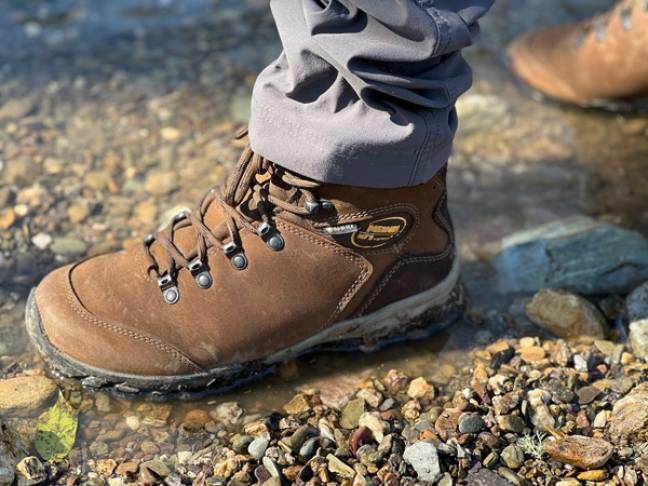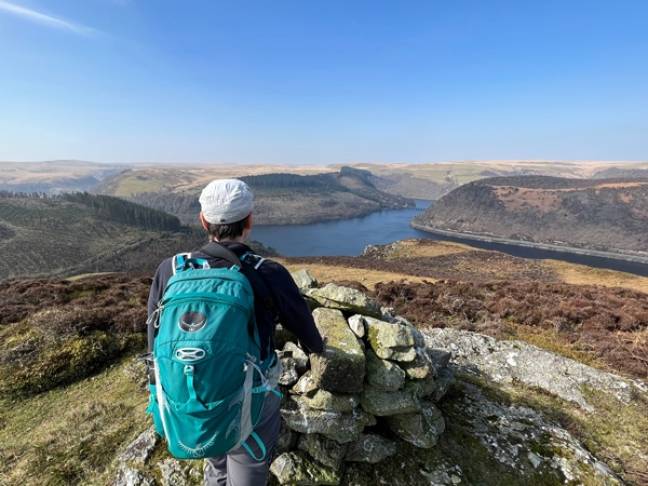A Kit List for a trek to Everest Base Camp
One of the questions we most commonly get asked from clients who are planning a trek to Everest Base Camp is what do I need to pack? In reply, here's a comprehensive clothing and equipment kit list for the trek, together with some helpful information and advice.
Bags and allowances
We give a free kit Mountain Kingdoms kitbag to everyone trekking with us in Nepal. Its capacity is approximately 80 litres and it's portered for you on trek. Along with your kitbag you need to take a daysack which you'll have with you all the time and will hold your day-to-day essentials. We recommend a capacity of 30-40 litres.
The total weight limit on your flight to Lukla is 15kg - which includes both your kitbag and your day pack - so you will need to be careful when packing for your trek. Our advice is to make sure to wear your down jacket and walking boots for the flight to Lukla and also not to carry too much water on that day - you will be able to fill up with water and repack any extra clothing you're wearing into your kitbag when you arrive in Lukla.
Because of these limits, lightweight, compact clothing and gear is the most important thing to remember when deciding what to buy and pack for your Everest trek.


Clothing
The key to being comfortable on trek is to adopt a system of several layers rather than one item of bulky warm clothing. Temperatures can drop very quickly in the evening at altitude and you will need to put on a number of layers once the walking has finished for the day. There are few warmer combinations than a pair of thermal leggings and roomy trekking trousers, with your trunk insulated with a base layer, micro fleece, thermal fleece jacket and a duvet jacket. Mountain Kingdoms provides free hire of a duvet jacket to all our Base Camp trekkers which you will be given in Kathmandu.
A disproportionately large amount of body heat is lost through your head (about a third), so just as important as warm body clothing is a warm hat, together with the hood of your waterproof jacket. Don’t forget that your waterproof jacket (which should always be in your day pack when you're not wearing it!) makes a very effective outer warm, windproof layer and is likely to be as often used for this as for its waterproof qualities. A sun hat is also an essential item, with a wide brim and something to protect your neck.
Tight fitting, figure-hugging clothing, such as those made with Lycra can often be offensive to locals, especially on women. If you find these items comfortable as a base layer then pack something to wear over the top of them. Similarly, wearing shorts is culturally insensitive in Nepal so leave them at home. Calf-length cut-off trousers are fine to take instead.
Our full clothing list:
- Waterproof jacket and over-trousers - preferable made from breathable material
- Duvet / down jacket - essential for colder evenings especially at altitude. Mountain Kingdoms provides this free of charge for all our Nepal treks.
- Trekking trousers
- Thermal underwear (these can double up for sleeping in so take a couple of sets)
- T-shirts / short sleeved shirts
- Long-sleeved shirts - to cover arms against the sun or insect bites
- Micro fleece
- Warm fleece
- Socks - walking socks and liners/thin socks (whatever you normally wear when hill walking)
- Warm hat and gloves - a spare pair of gloves is recommended
- Sunhat - ideally one that provides cover for your neck as well
- Scarf or Buff - for warmth and also for protection against wind or dust
- Undies
- Casual non-trekking clothes to wear in Kathmandu including a swimsuit for your hotel pool. These can be left in a bag at the hotel whilst you are on trek


Footwear
Your boots are your most important item of clothing. Generally speaking we would recommend you use the boots you already use for hill walking. If you do not have any suitable footwear, or the pair you have are on their last legs (or feet!) make sure you buy a new pair several weeks before your trek to enable you to fully break them in. In general price is a good indicator of quality – good quality boots will normally cost upwards of £120. Traditionally an all leather boot is harder wearing and more waterproof but nowadays there are many reputable makes which utilise a mix of leather/nubuck and fabric. It is useful to have Gore-Tex lined boots for breathability and extra waterproofing. Take time in choosing a boot that fits you well (remember to take your favourite pair of walking socks with you when trying boots on). Tell the assistant exactly what you are going to use the boot for and choose a boot with a good degree of ankle support and a good quality sole such as a Vibram sole.
Along with your walking boots you should take a comfy pair of lightwieght shoes or trainers for travelling in as well as to wear in the evening in your lodge or tea house.


Equipment and accessories
Along with your clothes and boots there are some other essentials you'll need for your Everest trek. Apart from your sleeping bag (which will be carried by the porters every day), everything else needs to fit in either you kit bag or your day sack, so try and keep your equipment lightweight and compact whenever possible.
This is our suggested list:
- Day sack - we recommend a bag with a capacity of 30-40 litres
- Sleeping bag - you need a good quality 4-season sleeping bag and liner. Mountain Kingdoms provides these for you free of charge, together with a sheet and pillow cover. These are carried for you each day by the porters so you don't need to make room for them in your kit bag
- Trekking poles - useful on steep ascents, descents and on rough ground, but, if you're not a regular user of trekking poles, try them out beforehand
- Assorted waterproof stuff bags - to keep your clothes and kit dry on trek, and to separate out items for easier accessibility. Plastic bags are a cheaper option
- Water bottle/s or water reservoir - 1-2 litres at least
- Water purification tablets or a water bottle with a good filter system i.e. a Mountain Kingdoms Water-to-Go bottle. All the drinking water supplied on trek will have been boiled and is safe to drink, but you may want to have a back up
- Sunglasses / Glasses - Sunglasses are easy to lose or break, so bring a cheap spare pair. If you wear glasses, bring a spare pair. Contact lenses can cause problems due to dust.
- Personal first aid kit (we'll provide guidance on what to carry before your trip)
- Head torch
- Camera (if you don't use your mobile) - with spare battery and memory cards
- Sunscreen (very high factor) and lipsalve
- Wash kit
- Lightweight Trekking towel
- Antibacterial gel and/or wet wipes
- Hand warmers - useful for very cold days
- Tissues
- Earplugs - especially if you're a light sleeper
- Spare batteries for electrical items where necessary and a power charger
- Electrical adaptor suitable for Nepal - Standard voltage in Nepal is 220-240 volts. Our best advice is to take a universal travel adaptor. Tea houses on trek usually have recharging facilities (they will make a charge) but if it's busy there may be a queue for recharging.
- Mobile phone - coverage in Kathmandu but limited on trek
- Playing cards, travel games, puzzle books
- Small lockable suitcase or bag - to leave your spare clothes in at your hotel in Kathmandu whilst you're on trek
Your daypack
Deciding what you need to have with you every day is a tricky decision when you start out on trek, but you'll soon realise what's essential and what's not. Remember that you won't be able to access your kitbag once it's been collected by the trek staff in the morning. From experience we suggest you keep the following items with you during the day:
- Water bottle/s and purification tablets if you're using them
- Waterproofs
- Warm layer
- Personal first aid kit including hand gel
- Sunscreen and lip salve
- Money and valuables
- Camera/mobile phone
- Sun hat and sunglasses
- Warm hat and gloves (when you're at higher altitudes)
- Any snacks
- A bag for any rubbish

So there you have it, everything you need (and a little more besides) to help get you to Everest Base Camp. If you've got any questions, or need any advice, then just contact one of our specialist staff who will be very happy to help.